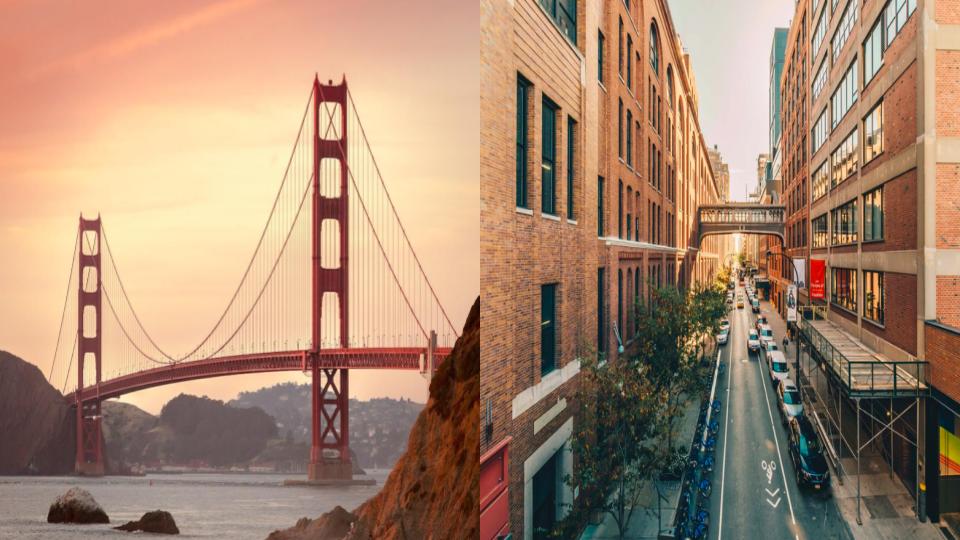Marktonderzoek in Silicon Valley en Silicon Alley

Silicon Valley en San Francisco
Silicon Valley is de thuisbasis van veel van de grootste technologiebedrijven in de Verenigde Staten.
De locatie is Noord-Californië, in de zuidelijke regio van San Francisco. Vernieuwers uit Silicon Valley vonden microprocessortechnologie uit, samen met andere essentiële computertechnologieën. Deze experts bouwden ook de microcomputer of pc.
Kansen zijn er in overvloed in de technologiesector, waar bedrijven toonaangevend zijn in markten waar de winnaar alles krijgt. Digitale ontwrichting heeft invloed op bijna elke industrie en Silicon Valley is het epicentrum van digitale ontwrichting. De deeleconomie heeft ook nieuwe apps en websites opgeleverd waarin peer-to-peer-transacties plaatsvinden. Grote wereldwijde bedrijven voor het delen van ritten zijn gevestigd in Silicon Valley. Technologiebedrijven creëren steeds vaker platforms die vraag en aanbod op elkaar afstemmen en enorme schaalvoordelen creëren die industrieën domineren.
![]()
Sinds de begindagen van computing heeft Silicon Valley een explosieve groei doorgemaakt. Deze trend zet zich vandaag de dag voort. Naast het feit dat het de technologische hoofdstad van Amerika is, hebben andere wereldwijde technologiebedrijven ook vestigingen en R&D-centra in Silicon Valley. Leasingactiviteit is ook robuust in de Valley. De vraag van huurders is ook recentelijk toegenomen.
Techanalisten voorspellen dat er binnenkort verschillende trends uit Silicon Valley komen. Er zal een toename zijn in gedeelde, meeslepende ervaringen. Virtuele en augmented reality zullen samensmelten tot een nieuw concept: mixed reality. Kunstmatige intelligentie zal productontwerp transformeren. Cryptocurrencies en andere blockchaintechnologieën zullen evolueren.
Durfkapitalisten hebben hun voorkeur uitgesproken voor veilige, volwassen investeringsgebieden. Durfkapitalisten tonen interesse in community-based bedrijven, wellness en e-sports. Ze hebben ook interesse getoond in kunstmatige intelligentie. Machine learning en levering van gezondheidszorg zijn andere interessegebieden.
Toch moet Silicon Valley meer aandacht besteden aan marktonderzoek. Bijna de helft van alle ter ziele gegane startups in Silicon Valley gaat failliet door gebrek aan marktbehoefte. Een andere cruciale fout van veel mislukte startups is dat ze de concurrentie verkeerd inschatten. Kennis over vergelijkbare producten kan waardevolle inzichten bieden in wat klanten leuk vinden en niet leuk vinden. Het kan ook een idee geven van welke functies bedrijven aan producten moeten toevoegen. Competitive Intelligence and Analysis kan bedrijven ook vertellen hoeveel klanten bereid zijn te betalen en manieren aanreiken om de bereidheid om te betalen (WTP) te vergroten.
Silicon Valley loopt nog steeds ver voor op andere regio's als het gaat om innovatie. Er zijn volop banen in de tech-industrie. Veel inwoners hebben diploma's in technische en wetenschappelijke richtingen. Toch is een van de recente trends in de Valley een exodus van inwoners, gedreven door hoge huizenprijzen. De eerdere instroom van inwoners is omgedraaid. Het district registreerde onlangs een verlies van 42 inwoners per maand.
Silicon Alley: Manhattan en Brooklyn, New York
 Sommige inwoners van Silicon Valley verhuizen ongetwijfeld naar Silicon Alley. Het nieuwe techdistrict, Silicon Alley, is de tegenhanger van de Valley in New York. De aanduiding “Silicon Alley” werd voor het eerst gebruikt in New York halverwege de jaren 90. New Yorkers wilden de technologische startups in Manhattan's Flatiron District groeperen. De media geven recruiter Jason Denmark de eer voor het bedenken van de naam. Destijds probeerde hij ontwikkelaars uit Californië naar New York te lokken.
Sommige inwoners van Silicon Valley verhuizen ongetwijfeld naar Silicon Alley. Het nieuwe techdistrict, Silicon Alley, is de tegenhanger van de Valley in New York. De aanduiding “Silicon Alley” werd voor het eerst gebruikt in New York halverwege de jaren 90. New Yorkers wilden de technologische startups in Manhattan's Flatiron District groeperen. De media geven recruiter Jason Denmark de eer voor het bedenken van de naam. Destijds probeerde hij ontwikkelaars uit Californië naar New York te lokken.
Silicon Alley is uitgebreid. Eerst verspreidde het zich naar de wijk TriBeCa. Nu omvat het de hele stad, met groeiende tech-startups in elk stadsdeel. Brooklyn trekt meer CreativeTech- en UrbanTech-bedrijven aan. Biotechnologie en FoodTech duiken op in Queens. Maatschappelijke ondernemingen vestigen zich in de Bronx en Harlem.
Deze spread symboliseert de groei en volwassenheid van de tech-industrie in New York. Er is groeiende steun voor tech. Nieuwe campagnes zoals “Gemaakt in New York” promoot New York als een startupcentrum en promoot het merk New York. Er is ook geen gebrek aan werkplekken, incubators, accelerators, evenementen, businessgroepen en overheidsinitiatieven.
De startup scene van New York profiteert van robuuste sectoren van andere industrieën. De kernindustrieën van NYC zijn financiële dienstverlening, gezondheidszorg, detailhandel, media, entertainment en mode. Silicon Alley heeft kansen en uitdagingen om zichzelf te positioneren om deze industrieën te bedienen.
Zoals in elk techdistrict zijn er in Silicon Alley een aantal startups om in de gaten te houden. Een voorbeeld is Knotel, een netwerk van beheerde, aanpasbare werkruimtes. Een ander voorbeeld is Teachable. Het Teachable-platform stelt docenten in staat om cursussen te maken en te delen. En dan is er nog Call9, dat het aantal onnodige ziekenhuisbezoeken vermindert. Call9 levert spoedeisende hulp aan het bed van verpleeghuispatiënten.
De opkomst van grote techbedrijven op de schaal van Apple en Facebook is waarschijnlijk in Silicon Alley. Google deed miljardeninvesteringen in onroerend goed in de wijk Chelsea in New York. Er is nu een uitstekende infrastructuur om tech-industrieën te ondersteunen. Deze infrastructuur is tot stand gekomen ondanks een geleidelijke vertraging van de investeringsactiviteit. Silicon Alley kan binnenkort Silicon Valley evenaren. Als gevolg hiervan zal New York City een formidabele tech hub worden die wordt aangestuurd door zijn momentum.
Over marktonderzoek in Silicon Valley en Silicon Alley
SIS heeft meer dan 40 jaar ervaring in het uitvoeren van marktonderzoek en strategieconsulting voor technologiebedrijven. Met kantoren, databases en veldteams op de grond in New York City en San Francisco, is SIS goed gepositioneerd om uw concurrentievoordeel te zijn in de snelle wereldeconomie van vandaag.


